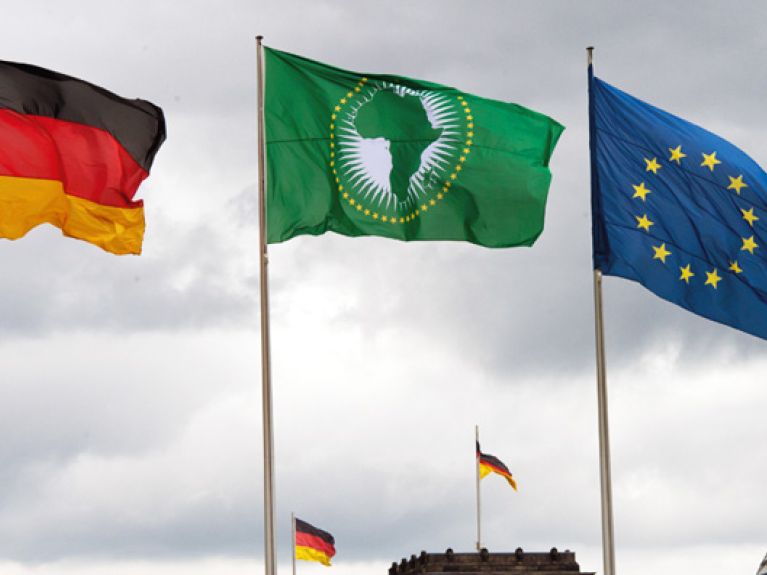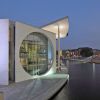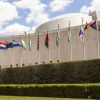A tailor-made African Union
The EU served as the role model for its African counterpart. The AU still has a number of hurdles to overcome – Europe and Germany are helping.

9 July 2002 went down in African history as the day on which 53 African states ceremoniously founded the African Union (AU). The international response was cautious initially, most observers appearing sceptical as to whether the AU would be able to rise to the huge challenges facing the continent. There were also doubts because the AU’s predecessor, the Organization of African Unity (OAU), proved itself virtually incapable of action and instead mainly provided African dictators with opportunities to promote themselves rather than effectively combating the continent’s problems which, in some cases, resulted in the disintegration of states.
The objectives named in the AU’s constitutive act include the socio-economic integration of the continent, the promotion of peace and security as a prerequisite for development, and the representation of Africa’s political interests in a globalised world. One downright sensational aspect is that Article 4 of the constitutive document gives the AU the right to intervene militarily – even without the consent of the state in question – in cases of grave war crimes, genocide or crimes against humanity. Such decisions can be taken with a two-thirds majority of the Assembly of Heads of State and Government. This is unique from an international law perspective; in 2004 it was decided that an intervention should also be possible in principle in the event of a government being illegally overthrown.
It is no coincidence that the name “African Union” is so similar to its European counterpart, the European Union (EU). The EU was the inspiration – in many respects, given that the European alliance was the model on which the relaunch of Africa’s integration was based. Numerous AU institutions such as the AU Commission, the Pan-African Parliament or the African Court of Justice were designed to mirror the corresponding EU institutions. Nonetheless, there are differences: for one thing, only some of the African institutions are supranational in orientation, with entire political areas administered non-autonomously, in contrast to the EU institutions. For another thing, economic integration – the core element of EU integration – is not well developed in Africa.
The way the EU and the German Federal Government have come to perceive the AU has improved, partly because of the decision by the Peace and Security Council of the AU to take military action and intervene in a number of civil wars. At the present time, there are a total of 22,000 AU peacekeeping soldiers deployed in such places as the Central African Republic, Somalia, in the Uganda-South Sudan borderland and in Sudan. The AU’s peacekeeping missions were expressly welcomed by the international community and the EU because they are in line with the EU principle of “African solutions for African conflicts”. That said, experience of the AU peacekeeping operations so far has revealed a number of weaknesses, for example in terms of their political and military leadership and logistics.
The EU and the Federal Republic of Germany regard the AU as their central dialogue partner in Africa when it comes to jointly promoting security and development on the continent and containing the threat posed by fragile states. The EU and its member states thus provide wide-ranging diplomatic, financial and logistical support to the AU. Since 2005, the EU has made up to one billion euros available for peacekeeping missions in Africa within the framework of the African Peace Facility (APF). The second cornerstone of the EU’s commitment is a programme for the direct support of the AU’s structures, providing 55 million euros over the space of four years. Through its contributions to the EU budget, Germany’s share of all these programmes amounts to roughly 25%.
Germany provides particular support to the AU in two areas: for one thing, the Federal Republic strives to deepen regional economic and political integration within Africa, and for another it supports capacity-building in AU conflict management. The large-scale programmes of the Deutsche Gesellschaft für Internationale Zusammenarbeit (GIZ) play an especially important role. For the years 2009 to 2015, the GIZ launched a number of programmes – funded by the Federal Ministry for Economic Cooperation and Development – to promote the African Union. One of them, for example, is devoted to establishing the African Peace and Security Architecture (APSA) and made a key contribution to setting up a continental early warning system and a conflict database. Other examples of GIZ projects since 2006 include the multi-year programmes aimed at supporting the Pan-African Parliament, the management capacities of the AU Commission and the improvement of border management. In addition, there are activities in the conventional domain of development cooperation relating to agricultural support and water management.
As a rule, the AU’s development programme – the New Partnership for Africa’s Development (NEPAD) – is the cooperation partner. Since 2006, Germany has invested a sum of 172 million euros to support the various AU programmes and institutions.
A considerable proportion of this total is being channelled into the Peace and Security Architecture – quite literally: an impressive building for the AU’s Peace and Security Council has been realized with Germany’s help. After four years of construction, German Federal Chancellor Angela Merkel officially handed it over to the African Union in October 2016. The earthquake-proof building was constructed on behalf of the German Federal Foreign Office according to international standards for environmentally sound construction. Around 360 staff members of the AU Peace and Security Department, who were previously in part spread across several branches around Addis or on the AU grounds, can now work under one roof. The building with its 13,500 square metres accommodates office space and conference rooms, a library, operation and response centres for the early detection of crises and for planning peacekeeping operations, and the plenary chamber of the AU Peace and Security Council. Primarily Ethiopian companies were involved in the construction process, using local construction materials. It was only for high-tech features such as the ultra-lightweight roof, made from a special foil, that materials and specialists from Germany were brought on board. And indeed, the Ethiopian construction companies and their staff benefited from this, for the foreign specialists trained their Ethiopian colleagues in using the material and passed on their knowhow.
The African Union’s ability to act is also undergoing a process of development and expansion – with the EU’s help, this could also evolve to become an impressive construct in a few years’ time. ▪
PROFESSOR DR. SIEGMAR SCHMIDT teaches international politics/analysis of political systems at the University of Koblenz-Landau.

